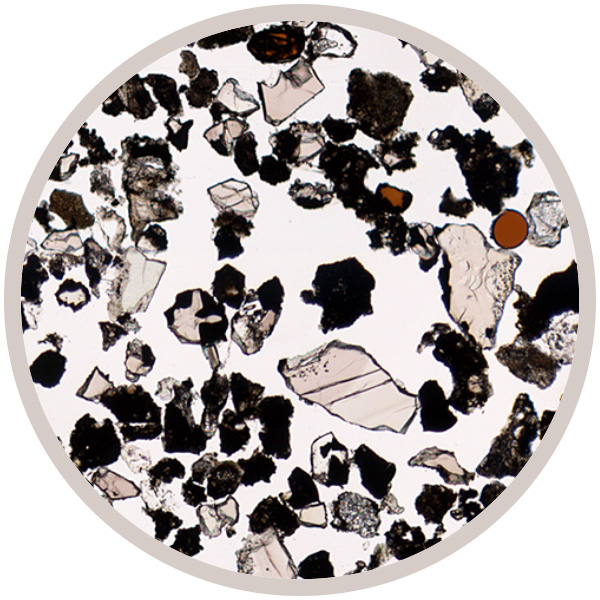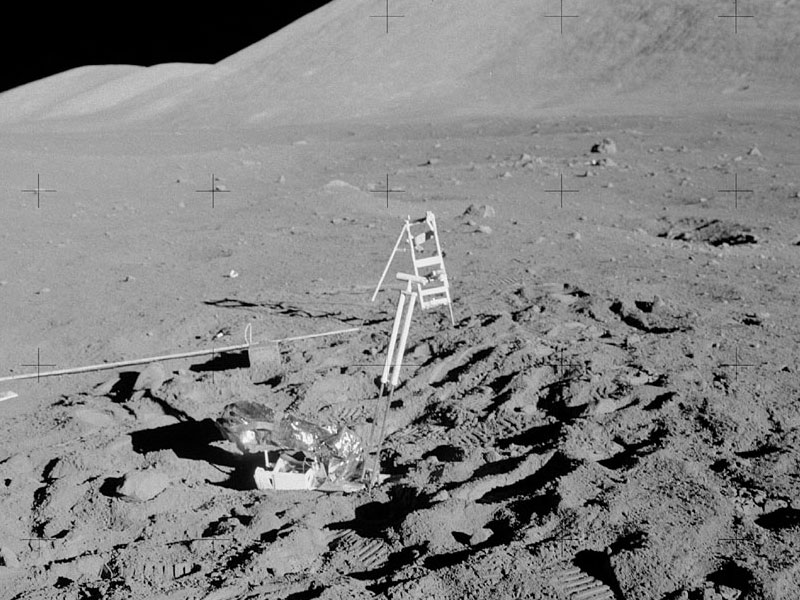
Fact sheet
Sample 70181 is lunar soil (known as a regolith) that was collected near the Lunar Lander during the Apollo 17 . Regolith is produced from the fine-grained debris formed in both large and small impacts. Mission to the Moon. It contains mineral, glass and rock fragments, and also agglutinates (clusters of dust welded together to form larger particles) formed by melting due to continual bombardment of the Moon’s surface by micrometeoroids.
The sample contains fragments of mare basalts, minerals including plagioclase and pyroxene, agglutinates and orange glass spherules.
Further details of this and other Apollo samples are here: http://curator.jsc.nasa.gov/lunar/
Apollo 17, the final manned landing mission, had two objectives: to obtain samples of ancient rocks from the lunar highlands and to look for evidence of younger volcanic activity on the valley floor.
This small Collection contains material deriving from both periods, including igneous rocks around 4.3 billion years old from the lunar highlands as well as younger volcanic samples dating from about 3.6 billion years ago.
Apollo 17 was launched on 7 December 1972.






